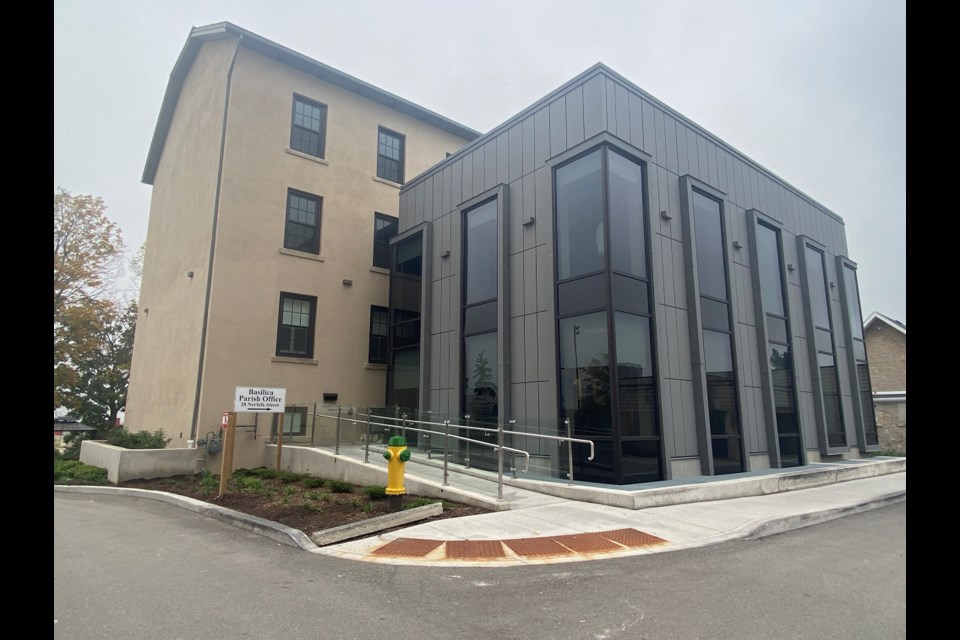Architectural work on the 1855-built rectory beside Basilica of Our Lady is being recognized as one of the finest examples of heritage conservation in Canada.
The building won an award of merit in the conservation architecture category in the 2021 awards competition run by the Canadian Association of Heritage Professionals (CAHP). The competition celebrates excellence in heritage conservation across the country.
“This was just such a great example of blending the new and the old in a way that really conserves, what the community values about this place, but also gives it that new life and new use so that it can continue to be used in future generations,” said president of CAHP, Christienne Uchiyama.
“When buildings are well maintained and well kept, they tend to just keep going and going. So unoccupied buildings seem to just keep going as long as you can maintain it and keep using it.”
She said when a heritage building is renewed, reused and re-purposed well, communities celebrate their collective history.
“By conserving and adapting the rectory for re-use, the building’s historic character and defining features help tell the story of this site in the founding of Guelph for present and future generations,” said Uchiyama.
Roberto Chiotti from Larkin Architect Limited, Arlin Otto and Will Teron from Tacoma Engineers, Lindsay Reid from Branch Architecture and Stephen Robinson from the City of Guelph were recipients of the award.
Originally, the history rectory was a Jesuit seminary and had an attached church rectory. Deferred maintenance on the building left it in need of restoration for it to function as the current church’s priests’ residence and parish office.
The restoration which began in 2018 included repairing the original roof, exterior materials and construction of a new addition.
“The adaptation addressed the 21st century needs of the church while contributing to the heritage context of the adjacent basilica as a national historic site and restoring the heritage attributes of the historic seminary building,” said Uchiyama.
